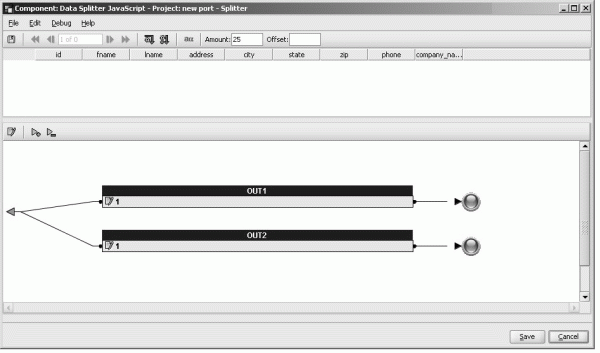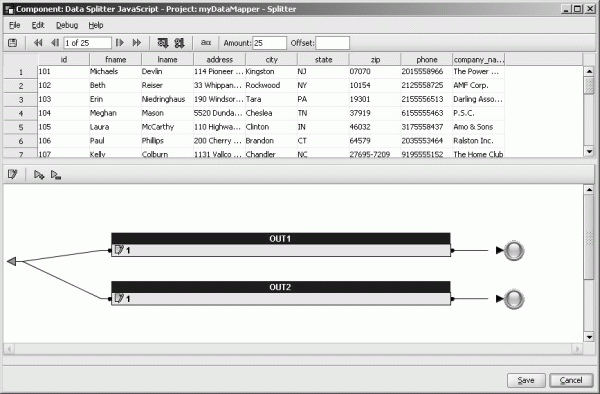Adding Data Splitter to a project opens a component window that displays inbound data attributes and OUT-port conditions.
Data Splitter is configured with two OUT-ports, OUT1 and OUT2. The OUT1 port is the top OUT-port; The OUT2 port is the bottom OUT-port. IN-port conditions for OUT1 and OUT2 port are pre-set to 1. Since this condition is always true, regardless of the current values if the IN-port, Data Splitter will copy all incoming records to both the output ports.
Since the IN-port data buffer is initially empty, only the inbound data attributes are visible. The OUT1 and OUT2 OUT-port structures match the IN-port structure.

To populate the Input attributes, click the Step to the next input buffer icon on the toolbar. Input data appears in the upper part of the component window.

There is a relationship between the records in the Input area and the OUT-port. Since the OUT1 and OUT2 share the same port structure as the IN-port, selecting any record in the upper window causes the OUT-port to indicate whether the record meets the port condition. When a record meets port conditions, the OUT-port color is green. When a record does not meet port condition, the OUT-port color changes to red.
![]() The number of records that Data Splitter forwards to
the OUT-ports can be different from the number of incoming records.
If a single record matches more than one port condition, it will
be available on all of these ports. Records that do not match any
of the conditions are removed from the data stream.
The number of records that Data Splitter forwards to
the OUT-ports can be different from the number of incoming records.
If a single record matches more than one port condition, it will
be available on all of these ports. Records that do not match any
of the conditions are removed from the data stream.